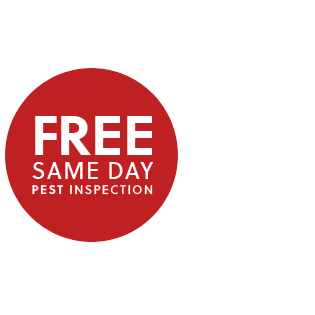Facts about subterranean termites
There is one neighbor Clark, your neighborly pest control expert, hopes you never get to know. It’s not the nosey one who’s always watching who is coming and going, or the cranky one who tells your kids to get off his lawn, but those ones you’ll never see – subterranean termites.
Subterranean termites are encountered in nearly all regions of California, from the sand dunes of the coast to the upper elevations of the mountain ranges – and even in some desert areas. They are the most destructive termites found in California, and while they’re small in size compared to dampwood termites and drywood termites, mature colonies can contain hundreds of thousands of individuals.
Subterranean termites can be found infesting fallen trees, stumps, or other dead wood in contact with the soil in a forest, a landscape, or inside structural lumber in houses. What makes subterranean termites thrive?
They need moisture to survive: Subterranean termites require moist environments. To satisfy this need, they usually nest in or near the soil, and they maintain some connection with the soil through tunnels in wood or through shelter tubes.
They are often found in wood that has been slightly decayed, as well as in soil that serves as a source of moisture that protects termites from desiccation, shields them from predators, and can be used as a building material for shelter tubes. Termites also will excavate passageways through the soil to reach additional food sources.
Where they go: Because subterranean termites usually do not build their nests in wood, they must forage for food away from the nest. In most parts of the country, foraging is essentially curtailed by winter or extremely dry periods. However, in California they can forage year-round, although the intensity of foraging varies with the season.
Termite colonies are self-perpetuating. Colonies that survive to maturity can contain hundreds of thousands of individuals and can pose a serious threat to structures. Subterranean termite colonies also may be established when an existing colony is divided. Colonies send workers to look for new food sources. If a new supply is found, then more individuals are recruited to the site.
What they eat: Termites do not like all wood species, but the condition of the wood is more important in determining the probability of having an infestation. Decayed wood is eaten faster, and is preferred over sound wood.
Most subterranean termite species consume wood at about the same rate, but three factors can make some species – especially the Formosan subterranean termite – potentially more voracious and damaging than others. These factors include:
- The environment in which they live – termites eat more wood when conditions are optimal over a longer period of time.
- The size of the insects – larger insects eat more wood.
- The number of insects – larger colonies eat more wood.
The amount of wood consumed generally increases with rising temperature. Foraging is minimal from November to February, moderate in spring and fall, and high, but erratic, during the summer months. During the hot summer months of June through September, even a slight amount of rain increases the number of foragers above the soil surface, and the amount of wood that a colony can consume.
If you think your house has subterranean termites, call or text California and Nevada’s trusted, friendly termite expert, Clark, at (800) WE-NEED-YOU (936-3339) or send an email to clarkcares@clarkpest.com
Until next time, the pest management professionals at Clark Pest Control thank you for helping to keep unwanted pests out of your home.
Note: Clark would like to to thank his friends at the University of California’s Agriculture and Natural Resources Integrated Pest Management Program for contributing information to this blog.


